Salmon Pink Birdeater Tarantula
- March 13, 2024
- 0 comment
The Salmon Pink Birdeater Tarantula, scientifically known as Lasiodora parahybana, is a captivating species of tarantula native to the rainforests of northeastern Brazil. Renowned for its vibrant salmon-pink coloration and imposing size, this arachnid species is among the largest of its kind, with individuals boasting an impressive leg span of up to 10 inches. Sporting a robust build and covered in fine hairs, the Salmon Pink Birdeater is a visually striking creature that commands attention. Despite its fearsome appearance, this tarantula is generally docile and shy by nature, preferring to avoid confrontation with humans.

It inhabits burrows dug into the forest floor, where it waits patiently to ambush prey, primarily feeding on insects and other small invertebrates. Mating typically occurs during the rainy season, with females laying eggs within silk cocoons and guarding them until they hatch. In captivity, these tarantulas are popular among enthusiasts due to their striking appearance and relatively docile temperament, though proper care and husbandry are essential for their well-being. Despite misconceptions surrounding their venomous nature, Salmon Pink Birdeater Tarantulas pose little threat to humans and are a fascinating species worthy of admiration and conservation efforts.
| Attribute | Details |
|---|---|
| Scientific Name | Lasiodora parahybana |
| Common Name | Salmon Pink Birdeater Tarantula |
| Origin | Northeastern Brazil |
| Size | Up to 10 inches in leg span |
| Coloration | Vibrant salmon-pink |
| Body Structure | Robust and hairy |
| Habitat | Rainforests, burrows in forest floor |
| Diet | Carnivorous, feeds on insects |
| Behavior | Docile and shy |
| Reproduction | Eggs laid in silk cocoon, guarded by females |
| Captivity Suitability | Popular in captivity, docile temperament |
| Conservation Status | Not endangered, but habitat loss poses threats |
| Legal Considerations | Check local laws regarding ownership |
| Lifespan | Several years in captivity |
| Venom | Mild, poses little threat to humans |
Exploring the Fascinating World of Arachnids
Tarantulas are among the most intriguing creatures in the arachnid world, captivating enthusiasts with their diverse appearances and behaviors. One particularly notable species is the Salmon Pink Birdeater Tarantula (Lasiodora parahybana). In this article, we delve into the captivating world of the Salmon Pink Birdeater Tarantula, exploring its appearance, habitat, behaviors, and much more.
Appearance and Characteristics
Size and Coloration
The Salmon Pink Birdeater Tarantula is renowned for its impressive size, with individuals boasting a leg span that can reach up to 10 inches. What truly sets this species apart is its striking salmon-pink coloration, which is vibrant and eye-catching. This distinct hue, coupled with its robust build, makes it a standout among tarantula enthusiasts.
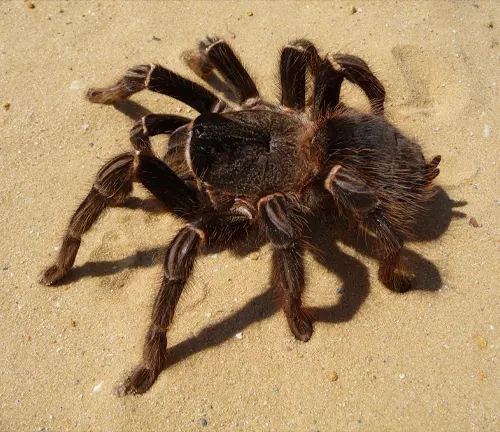
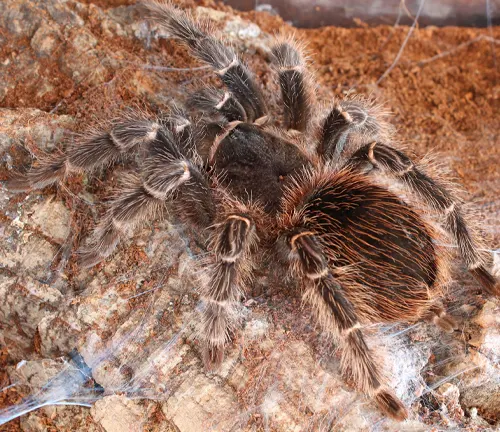
Unique Features
In addition to its captivating color, the Salmon Pink Birdeater Tarantula possesses several unique features. Its body structure is notably robust, with a hairy appearance that adds to its allure. Like all tarantulas, it sports eight legs and formidable fangs for capturing and subduing prey. Furthermore, it has specialized urticating hairs on its abdomen, which it can flick as a defense mechanism against potential threats. These hairs can cause irritation and discomfort to predators, making them an effective means of protection for the tarantula.
Natural Habitat
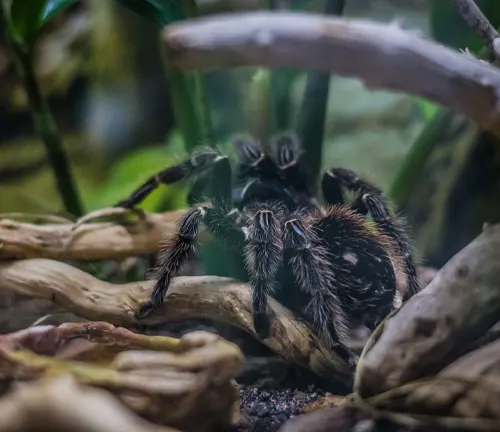
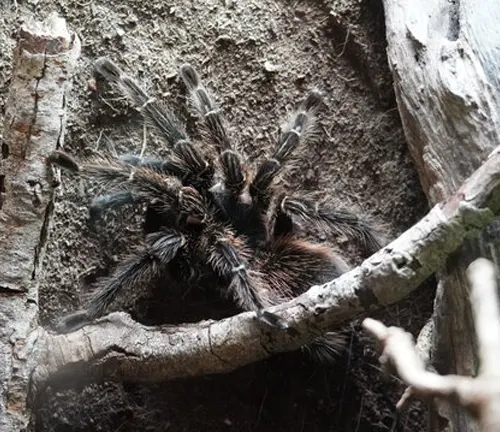
The Salmon Pink Birdeater Tarantula is native to the lush rainforests of northeastern Brazil. Within these dense and humid environments, the tarantula finds its ideal habitat. It typically resides in burrows that it digs into the forest floor, providing it with shelter and protection from predators. These burrows serve as safe havens for the tarantula, allowing it to retreat from danger and ambush unsuspecting prey. The rich biodiversity of the rainforest provides ample food sources for the tarantula, making it well-adapted to its natural surroundings. However, habitat loss due to deforestation poses a significant threat to the survival of this species, highlighting the importance of conservation efforts to preserve its native environment.
Diet and Feeding Habits
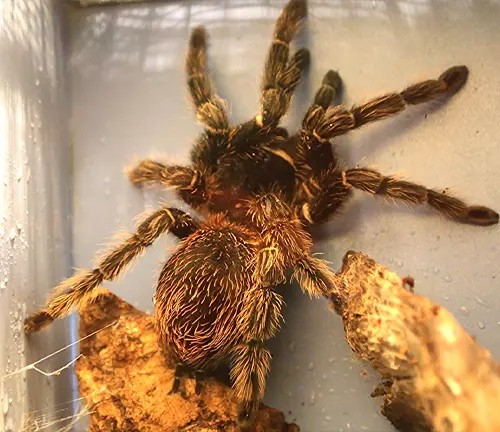
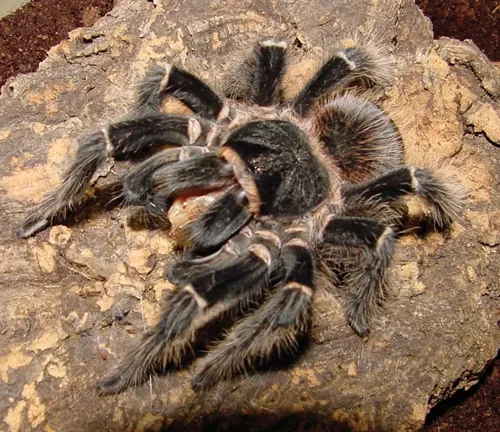
The diet of the Salmon Pink Birdeater Tarantula primarily consists of insects and other small invertebrates. In its natural habitat, it employs sit-and-wait tactics, patiently waiting inside its burrow until prey comes within striking distance. Once an opportunity arises, the tarantula swiftly captures its prey using its formidable fangs and venomous bite. It then immobilizes the prey and proceeds to consume it.
In captivity, Salmon Pink Birdeater Tarantulas can be fed a diet consisting of appropriately sized insects such as crickets, mealworms, roaches, and other commercially available feeder insects. Providing a varied diet ensures nutritional balance and helps maintain the tarantula’s health. Feeding frequency may vary depending on the tarantula’s age, size, and individual metabolism, but generally, adult tarantulas can be fed every 1-2 weeks, while younger individuals may require more frequent feeding. It’s essential to monitor feeding habits and adjust accordingly to ensure the tarantula remains healthy and well-nourished.
Reproduction and Lifecycle
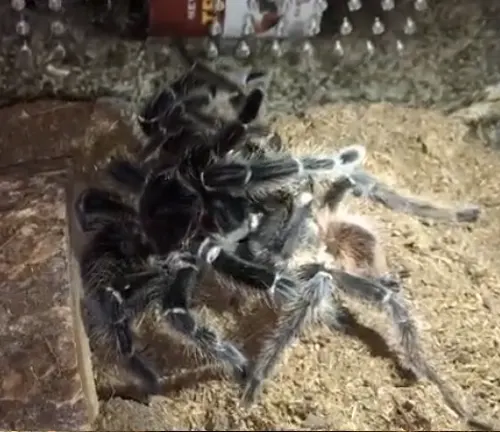
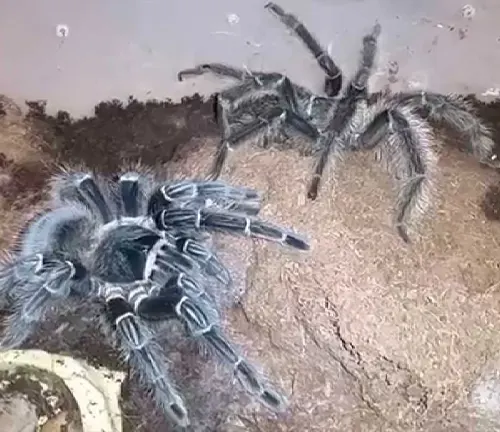
The reproductive process of the Salmon Pink Birdeater Tarantula is a fascinating aspect of its life cycle. Mating typically occurs during the rainy season when male tarantulas venture out in search of receptive females. Upon locating a female, the male performs a courtship ritual to woo her, often involving gentle tapping and vibrating movements.
Once mating is successful, the female lays her eggs within a silk cocoon, which she guards diligently until they hatch. The duration of the incubation period varies depending on environmental conditions, but typically ranges from several weeks to a few months. When the spiderlings emerge from the cocoon, they are tiny and vulnerable, resembling miniature versions of adult tarantulas.
Over the following weeks and months, the spiderlings undergo several molts as they grow and develop. Molting is a crucial process in the lifecycle of tarantulas, during which they shed their old exoskeleton and emerge with a larger, more mature one. With each molt, the spiderlings become progressively larger until they reach adulthood.
Behavior and Temperament
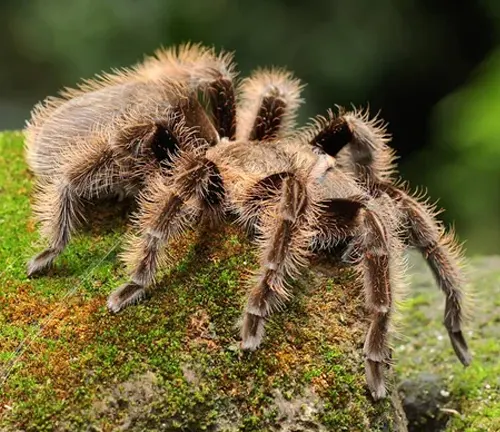

Despite their imposing size and appearance, Salmon Pink Birdeater Tarantulas are generally docile and shy by nature. These tarantulas prefer to avoid confrontation and will typically retreat to their burrows or hide when threatened. When disturbed, they may exhibit defensive behaviors such as rearing up on their hind legs or flicking urticating hairs from their abdomen as a deterrent.
In captivity, Salmon Pink Birdeater Tarantulas can become accustomed to human interaction with proper handling and care. While they may tolerate gentle handling by their owners, it’s essential to approach them calmly and respect their space. Rough handling or sudden movements can stress the tarantula, potentially leading to defensive reactions.
It’s crucial to remember that each tarantula has its own temperament and personality, so some individuals may be more tolerant of handling than others. Observing and understanding the behavior of your tarantula is key to developing a positive relationship and ensuring its well-being in captivity.
Handling and Care Tips
Proper handling and care are essential for the health and well-being of Salmon Pink Birdeater Tarantulas. Here are some tips to ensure the best possible care for your pet:
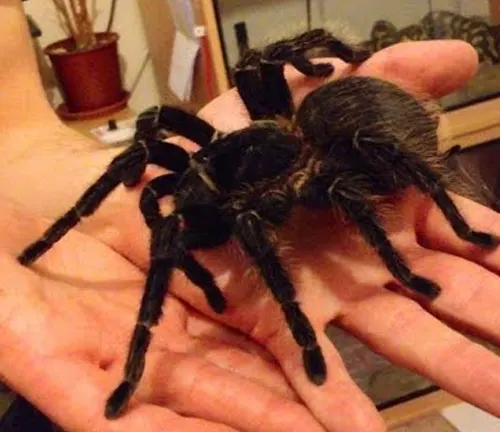

- Minimal Handling: While Salmon Pink Birdeater Tarantulas can tolerate gentle handling, it’s essential to minimize handling to reduce stress. Avoid unnecessary handling and only interact with your tarantula when necessary.
- Approach Calmly: When handling your tarantula, approach it calmly and slowly to avoid startling it. Sudden movements can cause stress and defensive reactions.
- Use a Soft Brush: If you need to coax your tarantula out of its enclosure, gently use a soft brush to encourage movement rather than using your hands.
- Support the Abdomen: When handling your tarantula, support its abdomen gently to prevent it from falling or feeling insecure. Avoid squeezing or applying pressure to any part of its body.
- Wash Hands: Before and after handling your tarantula, wash your hands thoroughly with soap and water to remove any potential contaminants.
- Provide a Suitable Habitat: Ensure your tarantula’s enclosure is appropriately sized and furnished with substrate for burrowing, hiding spots, and a shallow water dish for drinking.
- Maintain Temperature and Humidity: Keep the enclosure at the appropriate temperature and humidity levels to mimic the tarantula’s natural habitat. Use a thermometer and hygrometer to monitor conditions regularly.
- Feed a Varied Diet: Offer a varied diet of appropriately sized insects such as crickets, mealworms, and roaches to ensure your tarantula receives proper nutrition.
- Monitor Health: Keep an eye on your tarantula’s behavior, appetite, and appearance to detect any signs of illness or distress. Consult a veterinarian specializing in exotic pets if you have concerns.
- Respect its Space: Remember that tarantulas are solitary creatures and prefer minimal disturbance. Avoid tapping on the enclosure or causing loud noises that could stress your tarantula.
Common Health Issues
While Salmon Pink Birdeater Tarantulas are generally hardy creatures, they may still be susceptible to certain health issues. It’s essential to monitor your tarantula’s behavior and appearance regularly to detect any signs of illness or distress. Some common health issues to watch out for include:
- Dehydration: Tarantulas can become dehydrated if they do not have access to a clean water source. Signs of dehydration may include lethargy, sunken abdomens, and wrinkled skin.
- Molting Complications: Molting is a natural process for tarantulas, but complications can arise, especially during the molting period. Stuck molts, incomplete molts, or difficulties shedding the old exoskeleton can be concerning and may require intervention.
- Parasitic Infections: Like all animals, tarantulas can be susceptible to parasitic infections. External parasites such as mites or internal parasites can affect their health and well-being.
- Injuries: Accidental injuries, such as falls or rough handling, can occur and may lead to health issues if not addressed promptly. Fractures, cuts, or damage to limbs can impact the tarantula’s mobility and overall health.
- Respiratory Infections: Respiratory issues can occur if the tarantula’s enclosure is too humid or if there is poor ventilation. Symptoms may include labored breathing, wheezing, or discharge from the respiratory openings.
Interaction with Humans
Salmon Pink Birdeater Tarantulas generally prefer to avoid direct interaction with humans and will typically retreat or hide when approached. While they are not aggressive by nature, they may exhibit defensive behaviors if they feel threatened or stressed. When handling Salmon Pink Birdeater Tarantulas, it’s essential to approach them calmly and gently to minimize stress.
With proper handling and care, some Salmon Pink Birdeater Tarantulas can become accustomed to human presence and may tolerate gentle handling. However, it’s crucial to remember that each tarantula has its own temperament, and not all individuals will enjoy or tolerate handling.
When interacting with your Salmon Pink Birdeater Tarantula, it’s essential to respect its boundaries and preferences. Avoid sudden movements or loud noises that could startle or stress the tarantula. Additionally, always wash your hands before and after handling to prevent the transfer of any contaminants or harmful substances.
Legal Considerations
Before acquiring a Salmon Pink Birdeater Tarantula as a pet, it’s essential to familiarize yourself with the local laws and regulations regarding the ownership and possession of exotic animals. While Salmon Pink Birdeater Tarantulas are not typically subject to strict regulations, there may be certain restrictions or requirements depending on your location.
Some jurisdictions may require permits or licenses for keeping certain species of tarantulas or exotic pets in general. Additionally, there may be specific regulations regarding the importation, sale, or transportation of tarantulas across borders or between states or countries.
It’s important to research and comply with all applicable laws and regulations to ensure that you are legally allowed to keep a Salmon Pink Birdeater Tarantula as a pet. Failure to do so could result in legal consequences or confiscation of the tarantula.
Conservation Status
The Salmon Pink Birdeater Tarantula (Lasiodora parahybana) is not currently listed as endangered or threatened by any major conservation organizations. However, like many species of tarantulas and other wildlife, it faces threats to its habitat due to human activities such as deforestation and habitat destruction.
As native rainforests in northeastern Brazil continue to be cleared for agriculture, logging, and urban development, the natural habitat of the Salmon Pink Birdeater Tarantula diminishes. Loss of habitat not only directly affects the tarantula population but also disrupts the delicate balance of the ecosystem and threatens the survival of countless other species that call the rainforest home.
Conservation efforts aimed at preserving the remaining rainforest habitat are crucial for safeguarding the long-term survival of the Salmon Pink Birdeater Tarantula and other species. These efforts may include habitat restoration, protected area designation, community education and involvement, and sustainable land management practices.
Myths and Misconceptions
Despite their fascinating nature, tarantulas, including the Salmon Pink Birdeater, are often surrounded by myths and misconceptions. Here are some common myths debunked:
Highly Venomous
One prevalent myth is that tarantulas, including the Salmon Pink Birdeater, possess highly toxic venom that poses a significant threat to humans. In reality, while tarantulas do produce venom, it is typically relatively mild and primarily used to subdue their prey rather than as a defense mechanism against humans. Most tarantula bites result in minor irritation similar to a bee sting.
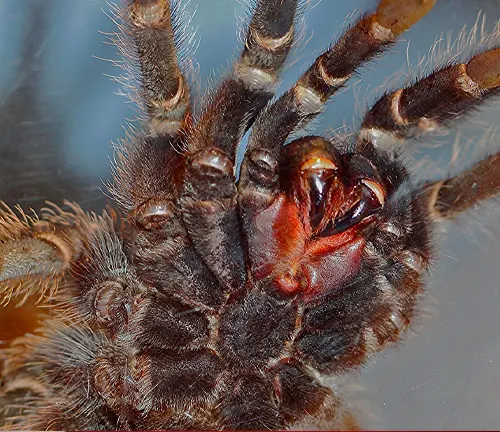
Aggressive and Dangerous
Contrary to popular belief, tarantulas are not aggressive creatures and will typically only bite if they feel threatened or provoked. The Salmon Pink Birdeater, like most tarantulas, is generally docile and prefers to avoid confrontation. Defensive behaviors such as rearing up on their hind legs or flicking urticating hairs are usually last-resort measures to deter potential threats.
Frequent Biting
Another misconception is that tarantulas are prone to biting humans frequently. In reality, tarantulas are more likely to retreat or use defensive behaviors such as hissing or bluffing before resorting to biting. Bites from tarantulas are relatively rare and typically only occur when the spider feels cornered or threatened.
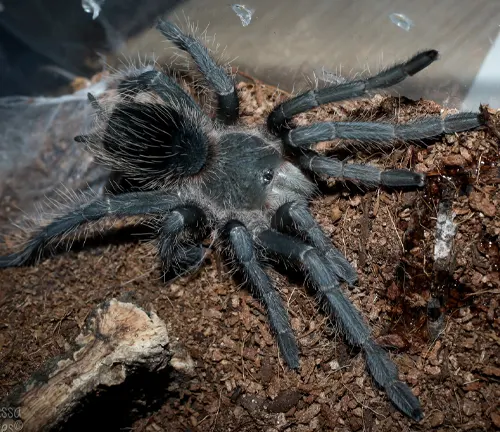
Deadly to Humans
Some people believe that tarantula bites are deadly to humans. While bites can be painful and may cause discomfort, especially for those with allergies or sensitivities to spider venom, they are not usually life-threatening. Fatalities from tarantula bites are exceedingly rare, and most bites result in minor symptoms that resolve on their own without medical intervention.
Unsuitable as Pets
Tarantulas, including the Salmon Pink Birdeater, are often perceived as dangerous or unsuitable pets. In reality, many tarantula species make fascinating and relatively low-maintenance pets for responsible owners willing to provide proper care and habitat. With the right setup and handling, tarantulas can be intriguing and rewarding pets to observe and care for.
Different Species
Lasiodora klugi
Also known as the Bahia Scarlet Birdeater, this species hails from Brazil and shares the vibrant salmon-pink coloration characteristic of the Salmon Pink Birdeater.
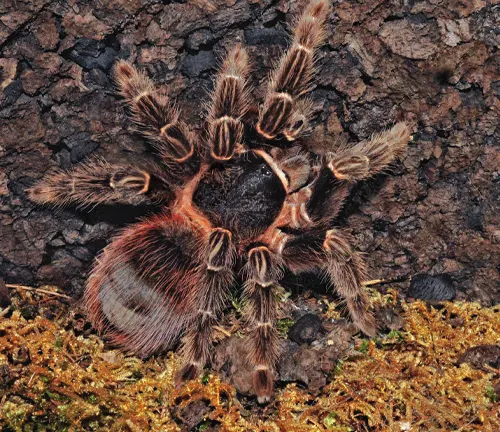
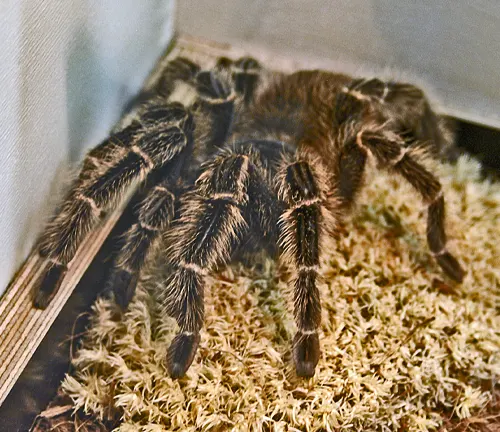
Lasiodora difficilis
Native to Brazil, this species is commonly referred to as the Brazilian Salmon Pink Birdeater due to its similar appearance to the Lasiodora parahybana.
Lasiodora cristata
Another Brazilian species, the Brazilian Fire Birdeater, also exhibits a salmon-pink hue, earning it the colloquial name of Salmon Pink Birdeater.
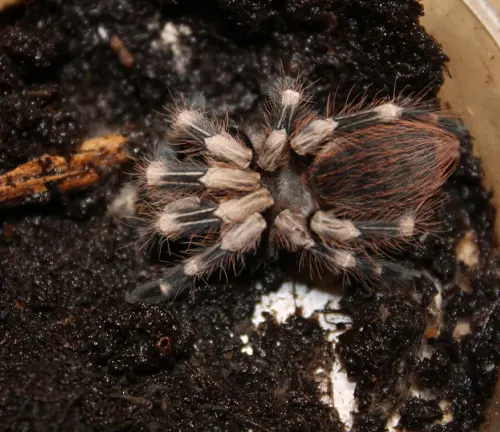
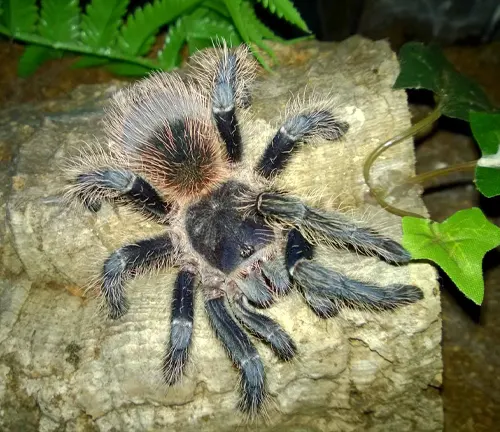
Lasiodora itabunae
Found in the Brazilian state of Bahia, this species is closely related to the Lasiodora parahybana and shares its striking salmon-pink coloration.
Frequently Asked Questions (FAQs)
- Are Salmon Pink Birdeater Tarantulas dangerous to humans?
Despite their imposing appearance, Salmon Pink Birdeater Tarantulas are not considered dangerous to humans. Their venom is relatively mild, causing only minor irritation in most cases. - How big do Salmon Pink Birdeater Tarantulas get?
These tarantulas can reach impressive sizes, with leg spans of up to 10 inches in some cases. - What do Salmon Pink Birdeater Tarantulas eat?
In the wild, they primarily feed on insects and other small invertebrates. In captivity, they can be fed a diet of appropriately sized insects such as crickets, mealworms, and roaches. - How often do Salmon Pink Birdeater Tarantulas molt?
Tarantulas molt periodically throughout their lives, with the frequency varying depending on factors such as age, growth rate, and environmental conditions. - Can Salmon Pink Birdeater Tarantulas be kept as pets?
Yes, these tarantulas are popular choices among enthusiasts due to their striking appearance and relatively docile nature. However, proper care and husbandry are essential for their well-being in captivity. - What is the lifespan of a Salmon Pink Birdeater Tarantula?
With proper care, Salmon Pink Birdeater Tarantulas can live for several years in captivity, with some individuals reaching ages of 10 years or more. - Do Salmon Pink Birdeater Tarantulas need special housing requirements?
While they don’t have extremely specific housing requirements, it’s essential to provide them with an appropriate enclosure size, substrate for burrowing, hiding spots, and proper temperature and humidity levels. - Are Salmon Pink Birdeater Tarantulas aggressive?
Generally, these tarantulas are not aggressive towards humans and will typically try to avoid confrontation. However, they may exhibit defensive behaviors if threatened. - How do Salmon Pink Birdeater Tarantulas defend themselves?
When threatened, they may rear up on their hind legs or flick urticating hairs from their abdomen as a defense mechanism. - Do Salmon Pink Birdeater Tarantulas make good beginner pets?
While they are relatively docile compared to some other tarantula species, beginners should still research and prepare adequately before acquiring one as a pet. - What are common health issues for Salmon Pink Birdeater Tarantulas?
While generally hardy, these tarantulas may be susceptible to issues such as dehydration, molting complications, and parasitic infections. - How do Salmon Pink Birdeater Tarantulas reproduce?
Mating typically occurs during the rainy season, with males seeking out receptive females. After mating, females lay eggs within a silk cocoon, which they guard until they hatch. - Are Salmon Pink Birdeater Tarantulas legal to own as pets?
It’s essential to check local laws and regulations regarding the ownership and possession of exotic animals, as some jurisdictions may have restrictions or require permits for keeping certain species of tarantulas.


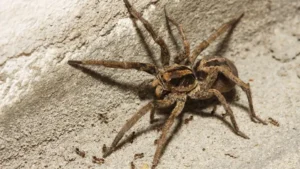

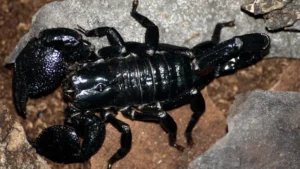
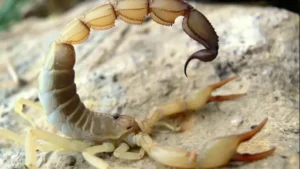


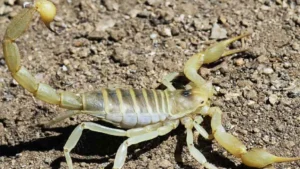

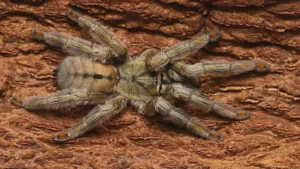

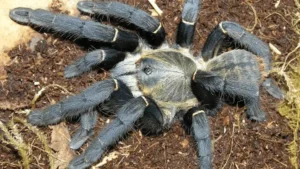

Leave your comment